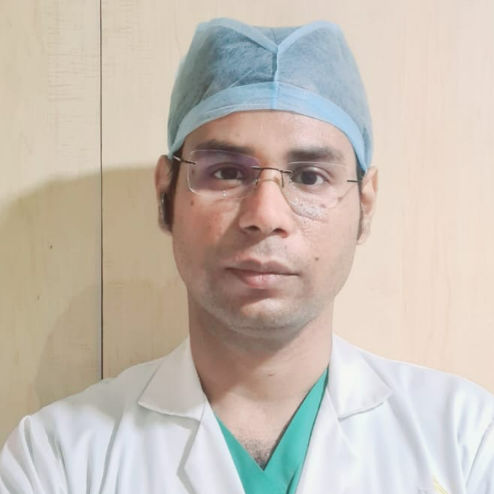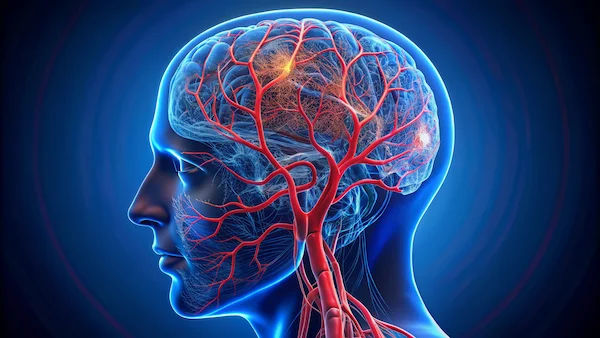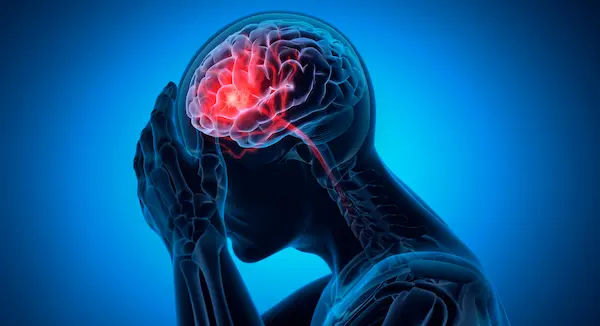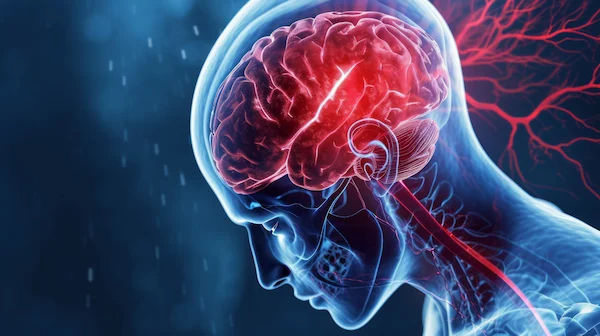The Golden Hour in Stroke Treatment: Why Every Minute Counts
Stroke is one of the most pressing medical emergencies, and time is of the essence when it strikes. Understanding the concept of the "Golden Hour" in stroke treatment is crucial, as this period can significantly impact the patient's recovery and quality of life. Every minute without treatment can increase the damage caused by the stroke, making early intervention a key factor in determining the outcome.

Written by Dr.Sonia Bhatt
Last updated on 3rd Jul, 2025

What is the Golden Hour in Stroke Treatment?
The "Golden Hour" refers to the first hour after the onset of a stroke when prompt medical intervention is most likely to result in the best possible outcome. During this time, doctors have a narrow window to treat the stroke before irreversible damage to the brain occurs. The brain is susceptible to changes in blood flow, and in the early stages of a stroke, brain cells begin to die quickly due to a lack of oxygen and nutrients. Restoring blood flow or reducing damage during this critical period can significantly improve recovery outcomes.
The term "Golden Hour" is borrowed from trauma medicine, where it refers to the first hour after a traumatic injury. In the case of stroke, however, this hour is even more crucial because brain tissue is far more vulnerable than other body tissues. Brain cells begin to die rapidly in the absence of oxygen, with millions of cells lost every minute. The idea behind the Golden Hour is that timely intervention can prevent further brain damage and improve functional outcomes, reducing the risk of long-term disability or death.
Types of Strokes and How They Differ
Strokes can generally be divided into two main types: ischaemic and haemorrhagic. The type of stroke a patient experiences will influence treatment options, but the Golden Hour concept remains highly relevant in both cases. Understanding the differences between these two types of strokes is essential for recognising how early treatment can benefit each condition.
Ischaemic Stroke: Ischaemic strokes account for about 85% of all strokes. This type occurs when a blood clot or plaque blocks or narrows an artery, restricting blood flow to the brain. Without enough blood, the brain cells in the affected area begin to die. Ischaemic strokes are typically treated with medications such as tissue plasminogen activator (tPA), a clot-busting drug that works best when administered within three to four and a half hours of symptom onset. In certain cases, a procedure called mechanical thrombectomy, which physically removes the clot from the brain, may also be performed.
Haemorrhagic Stroke: Haemorrhagic strokes occur when a blood vessel in the brain ruptures, leading to bleeding in the surrounding tissue. The presence of blood in the brain creates additional pressure, which can cause more brain cells to die. Haemorrhagic strokes may be caused by conditions such as high blood pressure, aneurysms, or blood vessel malformations. Treatment for a haemorrhagic stroke usually focuses on controlling the bleeding and alleviating pressure on the brain, often requiring surgery or other interventions. Early intervention is essential to prevent further brain damage in these cases.
Both types of strokes require urgent treatment, and the longer a patient goes without medical care, the more severe the damage to the brain can become. Thus, the Golden Hour concept is equally applicable to both ischaemic and haemorrhagic strokes.
The Importance of Early Intervention
The brain is highly dependent on a constant supply of blood to deliver oxygen and nutrients to its cells. When a stroke occurs, this supply is interrupted, leading to the death of brain cells. However, the brain’s cells are not all affected equally, and the damage is often confined to a specific area of the brain. In the Golden Hour, treatment can help to restore circulation to the brain, minimise the extent of damage, and prevent further injury to healthy brain tissue.
The earlier a stroke is diagnosed and treated, the better the chances are that brain function can be preserved. Research has shown that every minute a stroke goes untreated, nearly 1.9 million brain cells are lost. That means that after just one hour, the brain can suffer irreversible damage. However, treatment administered during the Golden Hour can dramatically improve the chances of recovery, potentially reducing the severity of the disability or even preventing long-term consequences.
The window of opportunity for treating strokes is particularly time-sensitive in the case of ischaemic strokes. For example, tissue plasminogen activator (tPA) — the standard treatment for ischaemic strokes — must be given within a certain timeframe, typically within 3 to 4.5 hours of the first symptoms. Beyond this timeframe, the drug may not be effective and may even increase the risk of complications. For patients who cannot receive tPA due to timing, other treatments, such as mechanical thrombectomy, may be considered, but these, too, are most effective when performed early.
In the case of haemorrhagic strokes, it’s critical to stop the bleeding and reduce the pressure on the brain. Early surgery or other interventions can help to minimise further damage, and the faster medical intervention occurs, the more likely the patient will recover with fewer complications.
What Happens During Stroke Treatment?
When a stroke occurs, immediate action must be taken to minimise the damage. Here’s an overview of what typically happens during stroke treatment once a patient arrives at the hospital.
Initial Diagnosis: The first step in treatment is diagnosing the type of stroke the patient has experienced. This is usually done using imaging techniques, such as a CT scan or MRI, to identify whether the stroke is ischaemic or haemorrhagic. Imaging helps doctors determine the location and extent of the damage, which is essential for deciding on the best course of treatment.
Treatment for Ischaemic Stroke: If the patient is suffering from an ischaemic stroke, the goal is to restore blood flow to the affected part of the brain as quickly as possible. This can be done with clot-busting medications like tPA, which can dissolve the blood clot, causing the blockage. The effectiveness of tPA is highest when administered within the first 3 to 4.5 hours after symptoms begin. Mechanical thrombectomy may be considered for patients who are beyond the timeframe for tPA. This procedure involves using a catheter to remove the clot physically from the brain’s arteries.
Treatment for Haemorrhagic Stroke: In the case of a haemorrhagic stroke, the primary concern is to stop the bleeding. This may require surgery to repair the ruptured blood vessel or to remove blood that has pooled in the brain. Additionally, medications may be used to control blood pressure, reduce the swelling in the brain, and prevent further bleeding.
Ongoing Care: Following the initial treatment, patients are monitored closely in a hospital setting. They may require further interventions such as rehabilitation to regain lost motor function, speech therapy, or other forms of therapy, depending on the extent of the stroke's effects.
How the Golden Hour Impacts Long-Term Recovery
The impact of timely intervention in the Golden Hour extends far beyond just survival — it also affects long-term recovery and quality of life. Patients who receive treatment within this critical period are more likely to experience less severe disability and are more likely to recover key functions like movement, speech, and cognition.
Studies have shown that patients who receive prompt treatment for ischaemic strokes — particularly those who receive tPA within the recommended window — have better long-term outcomes compared to those who are treated later. Similarly, patients who undergo timely surgical intervention for haemorrhagic strokes are at a reduced risk of complications and permanent disability.
Furthermore, early intervention is linked to a reduced likelihood of complications such as brain swelling, infections, and blood clots. When patients receive treatment within the Golden Hour, these risks are lowered, increasing their chances of a full recovery.
Conclusion
The Golden Hour in stroke treatment is an essential concept that can make a significant difference in patient outcomes. During the first hour after a stroke, timely medical intervention can prevent further brain damage, increase the chances of recovery, and reduce the long-term effects of the stroke. Whether the stroke is ischaemic or haemorrhagic, understanding the importance of the Golden Hour can help healthcare providers, patients, and families make critical decisions that impact the recovery process. For patients, recognising the need for urgent medical attention and acting fast is vital. When a stroke is suspected, every minute counts, and it is crucial to seek immediate medical care. The faster a stroke is treated, the better the chance for recovery.
Consult Top Neurologists
Consult Top Neurologists

Dr. Aditendraditya Singh Bhati
Neurosurgeon
21 Years • MBBS(2004), DNB Neurosurgery(2014); MNAMS; Fellow Skull Base Endoscopy (Italy), Fellow Extended Skull Base ( Weill Cornell, USA), Fellow ZAP-X Radiosurgery. Member of American Association of Neurological Surgeons
Delhi
Apollo Hospitals Indraprastha, Delhi
(100+ Patients)

Dr. Ganeshgouda Majigoudra
Neurologist
10 Years • MBBS, MD ( GENERAL MEDICINE) DM (NEUROLOGY)
Bengaluru
Apollo Clinic, JP nagar, Bengaluru

Dr. E Prabhakar Sastry
General Physician/ Internal Medicine Specialist
40 Years • MD(Internal Medicine)
Manikonda Jagir
Apollo Clinic, Manikonda, Manikonda Jagir
(150+ Patients)

Dr Debnath Dwaipayan
Neurosurgeon
9 Years • MBBS, MS(Gen. Surgery), DrNB (Neurosurgery)
Delhi
Apollo Hospitals Indraprastha, Delhi

Dr. Uddalak Chakraborty
Neurologist
8 Years • MBBS, MD(GENL.MED.),DM(NEUROLOGY)
Kolkata
MCR SUPER SPECIALITY POLY CLINIC & PATHOLOGY, Kolkata
(25+ Patients)




